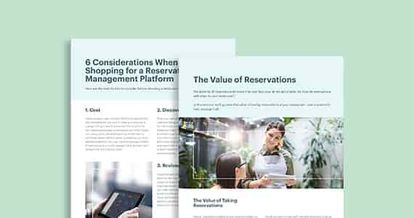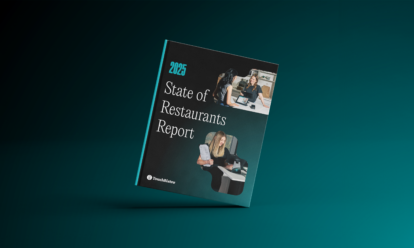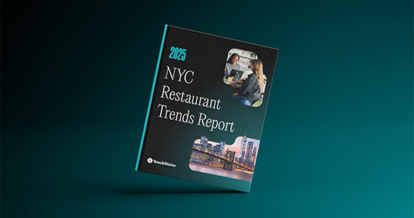You’re not afraid of hard work. As a restaurateur, it’s in your DNA. Maybe you’ve even considered taking your entrepreneurial ambitions to the next level and running a multi-unit restaurant. Operating a multi-location business is an exciting and profitable endeavor, and it can be a safer investment than owning just one restaurant thanks to multiple revenue streams. However, it also comes with more complications than running a single location.
In this guide, we’ll dive deep into multi-unit restaurants, including:
- Chain restaurants
- Franchises
- Restaurant groups
Plus, we’ll share five tips to help you master multi-unit restaurant operations. Get ready to roll up your sleeves!
What is a Multi-Unit Restaurant?
A multi-unit restaurant is any restaurant business with two or more locations. However, it’s not as cut-and-dry as that. You can choose to manage your multi-location business in a number of different ways. Let’s walk through three of the most common business models.
Chain Restaurants
What is a chain restaurant? The defining factor of a chain restaurant business is that each location is owned by the same parent company.
Fast-casual restaurant Chipotle is a well-known example of a chain. The brand now owns more than 2,750 locations across America, but it used to be a franchise business. So, why the change in direction? Chipotle did not want to “give up control” of its multi-unit restaurant operations. It’s important to note that franchisors view this dynamic as a positive, which we’ll discuss next.
Franchises
With a franchise model, different locations are owned by separate individuals who are solely responsible for daily restaurant operations management. McDonald’s and Tim Hortons are two hugely popular franchise restaurants (although McDonald’s does have some corporately-owned chain locations).
Franchising offers financial benefits to multi-unit restaurant managers, as these types of restaurants usually boast lower overhead and operational costs than chains.
Restaurant Groups
A restaurant group is an operation that contains several individual restaurant concepts, which are managed by one corporate entity. This means each restaurant concept has its own unique brand. Therefore, it’s not always obvious when restaurants are part of a group.
There are both corporate roles and venue roles within a restaurant group. Corporate roles like marketing and HR tend to serve all restaurants within the group, while venue roles like servers and cooks tend to serve an individual restaurant.
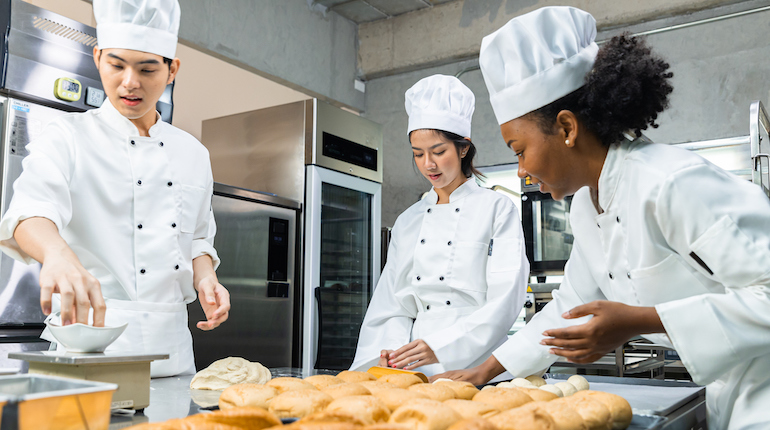
How to Manage a Multi-Unit Restaurant
Now that we’ve answered the question, “What is a multi-unit restaurant?”, let’s explore five tips to help you run multiple locations like a pro. Keep in mind that with a multi-unit model, you’ve got an opportunity to bring in profits up to 7% higher than you would if you were running a single full-service restaurant – but only if you manage the business wisely. Here’s how.
Establish Consistency
Brand consistency can increase revenue by up 10 to 20%, so it’s key for every restaurant in your chain, franchise, or group to have some level of consistency with the other units. This will look different depending on what kind of business you’re running.
For example, in a chain business, everything from your restaurant brand guidelines to menu to operations should be consistent. The same goes for a franchise, although some menu items may differ – think seafood in coastal locations.
It’s especially crucial that staffing and recipe consistency at chain restaurants be on-point. This way, the guest experience will always feel the same (and feel great!) every time a guest visits, no matter which location they dine at. This is the hallmark of an excellent restaurant and you can easily start standardizing your processes with the help of a restaurant operations checklist and a restaurant franchise management software.
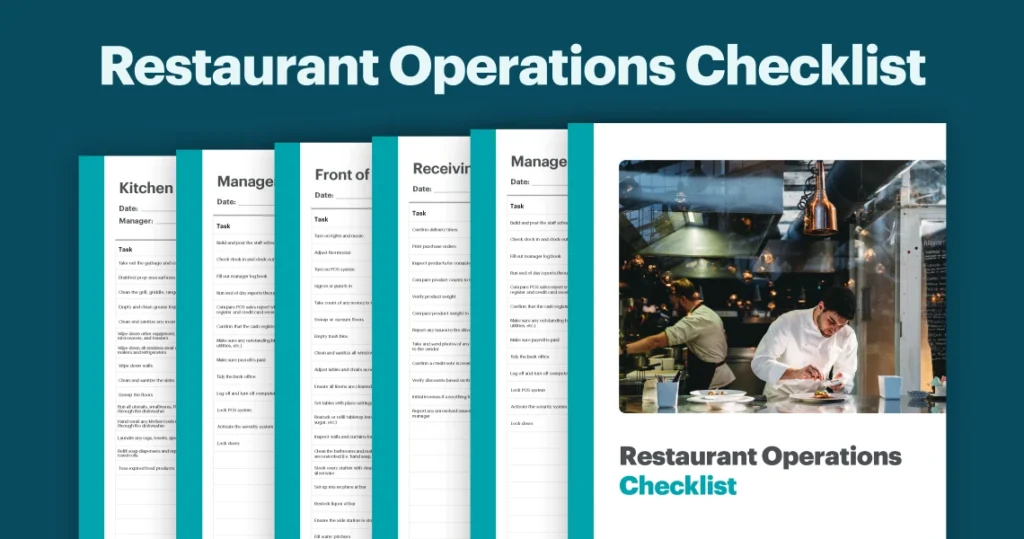
This restaurant operations checklist includes 12 individual lists that can help your staff perform day-to-day operations efficiently and effectively.
Alternatively, since a restaurant group operates different concepts, the branding will vary from concept to concept – but the operating procedures should be consistent. Using standardized tools like a restaurant employee handbook template or a restaurant training manual template can help ensure a high level of service across all restaurants in your group.
Here are a few other areas to keep consistent so things run smoothly:
- Inventory management
- Opening, closing, and shift changes
- Quality control
- Guest service
- Financial reporting
- Food safety
- Waste management
- Equipment maintenance
- Management team communication
- Technology solutions
Hire a Multi-Unit Manager
With all of the areas that need to be consistent in a multi-unit restaurant business, it begs the question, how will you keep an eye on everything? If you have a growing portfolio of restaurants, it might be useful to hire a multi-unit restaurant manager to oversee day-to-day operations across all your locations. You’ll find that a restaurant general manager job description also includes many similar responsibilities.
Here are a few responsibilities you can delegate to a multi-unit manager:
- Training, coaching, and supporting restaurant managers
- Setting business goals
- Developing employee orientation programs
- Monitoring employee training for quality
- Ensuring proper staffing levels are maintained
- Creating customer loyalty programs
- Handling in-venue issues
- Ensuring operational procedures are followed
- Supporting marketing campaigns
- Working with staff to reach sales targets
Another option is to hire several area managers who know how to manage restaurant staff and oversee operations in specific regions. Similarly to a multi-unit manager, an area manager will help ensure each location in your area is operating successfully. They’re your point person for driving the following in your business:
- Operational efficiency
- Goal setting
- Financial results
- Market presence
- Market growth
- Quality of service
- People management
- Policies and procedures
Use the Same Software
An increasing number of restaurants are turning to technology to help their businesses run better. Over 70% of North American restaurants believe adopting technology is the biggest factor that will help them become more agile and 67% have changed their point-of-sale system (POS) in the past year. The real benefits to a multi-unit restaurant business occur when your software works seamlessly across locations.
How can you avoid wrangling technology systems that don’t talk to one another? Choose software that supports multi-unit restaurant management. Your tech should have remote, cloud capabilities so you don’t need to be physically present at each venue to make changes to the system. For instance, a cloud-based multi-location POS and staff scheduling software can be game changers to help you run multiple units from one centralized system.
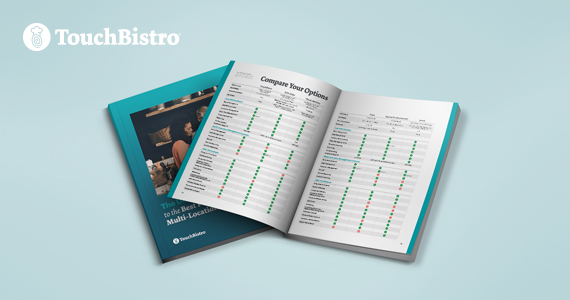
Compare the top 6 multi-location POS softwares on features, pricing, payments, and more.
Here are three major advantages you can gain by using the same software across all of your locations.
1. Compare Sales More Easily
You shouldn’t have to be Sherlock Holmes to get to the bottom of how each of your restaurant locations are performing from a sales perspective. By leveraging the same software across all locations, the process of comparing sales in multiple venues is much easier and more straightforward than trying to piece together data from different technology systems.
2. Maintain or Improve Consistency
As you now know, consistency is the name of the multi-unit game. Using the same software can help you keep everything from your employee onboarding to inventory management to customer loyalty programs consistent across all of your venues.

This restaurant operations checklist includes 12 individual lists that can help your staff perform day-to-day operations efficiently and effectively.
3. Make Staffing Changes Smoothly
Say you own franchises in three different cities and one of those cities is about to kick off its biggest food festival of the year. Your restaurant is participating, and you’re going to need staffing backup. When you have the same software across all locations, you can easily transfer staff from one franchise to another because they’re already set up in your systems and they already know exactly how everything works.
Pool Resources
Most restaurants aren’t exactly flush with extra resources these days. 79% of operators are currently short at least one position, according to our 2025 State of Restaurants Report. They’re also under financial strain, with 26% of operators citing food/inventory costs as their top expense.
So, how can you get more resources when you’re short on both staff and cash? The multi-unit model just might be the solution for you. One of the biggest benefits of running multiple locations is that you can share resources across your venues.
For example, if you’re struggling with inventory, a multi-unit model enables you to buy ingredients in bulk and divvy them up among various locations. Or, if staffing is your issue, employees can work at different venues when needed.
Collect Data
It pays to run a data-driven restaurant. Data-driven businesses are both 23 times more likely to gain new customers and six times more likely to keep existing customers, according to McKinsey & Company. On top of that, these companies are 19 times more likely to be profitable.
Fortunately for multi-unit restaurateurs, running multiple venues means you have a wealth of data at your fingertips; you just need to put it to use. You can do that in a few ways, including:
1. Responding to Diner Behaviors
Collecting data allows you to identify diner behaviors and make changes accordingly. For instance, if you notice customers are responding well to a marketing promotion at one location, you could try the same offer at another location.
2. Identifying Opportunities to Boost Efficiency
There are probably a few ways you can run a tighter ship, but without data, you may never know for sure. For example, you could run the numbers on your food waste to see if there’s an opportunity to make improvements and apply the changes in all of your venues.
3. Expanding into Successful Markets
Do you have a bigger vision for your multi-unit restaurant business? If you want to continue adding new venues, data can be incredibly useful because it can help you identify successful markets. This way, you won’t have to worry about opening a location in a declining market.

Compare the top 6 multi-location POS softwares on features, pricing, payments, and more.
You now have a solid understanding of multi-unit restaurant management, with three different types of business models (chains, franchises, and restaurant groups). You’ve also got five tips for how to manage a multi-unit restaurant efficiently and successfully. Here’s to your empire!
Download our free inventory template
Sign up for our free weekly TouchBistro Newsletter



